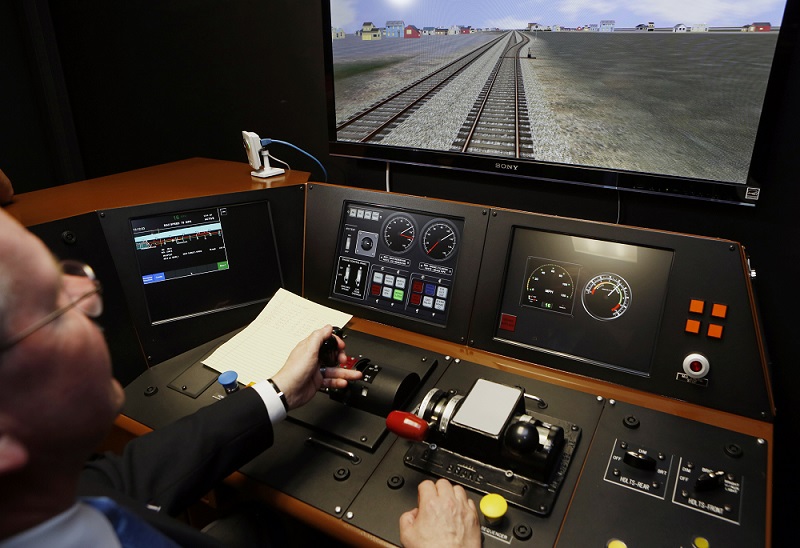
The railroad industry is playing down expectations that a safety technology that could have prevented recent deadly train crashes will be in operation across the United States by the end of the year.
Indeed, freight and commuter rail officials speak as if there never was any plan to complete their work on the technology known as positive train control, or PTC, by Dec. 31.
Congress required in 2008 that railroads adopt PTC and gave them seven years to do the job. When it became clear that wasn’t enough, Congress gave them another three years. The discussion then was that a few railroads might need even more than three extra years, and provisions were added to the legislation to allow railroads that showed substantial progress, but couldn’t meet the new deadline, the ability to obtain extensions of up to two additional years.
Officials for the trade associations representing the seven major freight railroads in the U.S. and the nation’s commuter railroads now say they view Dec. 31 as the date by which railroads must meet several PTC milestones to qualify for an extension, rather than the ultimate deadline.
The Transportation Department has little choice but to grant the extensions as long as railroads meet the milestones, said Kathryn Kirmayer, the Association of American Railroads’ general counsel. One milestone is that freight railroads have PTC in operation on half their route miles where it’s required.
“By the end of 2020 is the absolute deadline everybody has to have it installed and implemented, which means operating everywhere they are required to have it operating,” she said.
Members of Congress expressed frustration with railroads backing off this year’s deadline.
Congress never intended the extensions be used “to allow railroads that have dragged their feet to just blow off the mandate,” said Rep. Peter DeFazio of Oregon, the House transportation committee’s senior Democrat. Sen. Bill Nelson of Florida, the Senate commerce committee’s senior Democrat, said, “Every railroad should be taking the recent deadly train accidents seriously and doing everything they can to meet the 2018 deadline.”
Reports filed with the Federal Railroad Administration show some railroads have nearly completed their work, while others have made little progress.
Randy Clarke, the American Public Transportation Association’s vice president for operations, said three or four of the nation’s 27 commuter railroads have already received extensions past Dec. 31 and more extensions are expected.
“We are actively working as an industry to get everyone to the milestones necessary for extension or to completion,” he said. “We know not every agency is in the same place and some have more complications than others.”
The National Transportation Safety Board has said the technology could have prevented a collision between an Amtrak train and an out-of-service CSX freight train on Sunday near Cayce, South Carolina, and the derailment of an Amtrak train in December near Olympia, Washington. Five people were killed and dozens more injured in the two crashes.
Amtrak has said it will complete its work on PTC by Dec. 31, but its trains often operate on tracks owned by other railroads.
Sarah Feinberg, who led the railroad administration under President Barack Obama, drew a distinction between large freight railroads and smaller commuter railroads that often struggle for funds.
“The freight industry should be embarrassed by the way they’ve approached the PTC mandate and deadline, and the Congress should be embarrassed for letting them get away with it,” she said.
But industry officials said the obstacles to developing PTC systems are underappreciated. It took many years just for the railroad administration to develop standards and then to approve systems that meet those standards, Clarke said.
Despite some federal aid, commuter railroads have had a hard time scraping up the money for the technology.
“We’re public transit agencies. It’s not like we have a surplus of money lying around,” he said.
Mike Rush, vice president of freight rail group, estimated that freight railroads will ultimately spend $10 billion implementing PTC, and commuter railroads about $3 billion.
Other challenges have included acquiring wireless spectrum, taking locomotives out of service to install hardware and software, installing communications towers along tracks, and competing with other railroads for the services of the handful of specialized contractors able to install the systems, Clarke said.
“You don’t have a lot of available (contractors), and everyone is trying to hit the deadline at the same time,” he said. “We don’t have a surplus of money and the technical challenges are immense, especially on the larger, more complicated railroads.”

